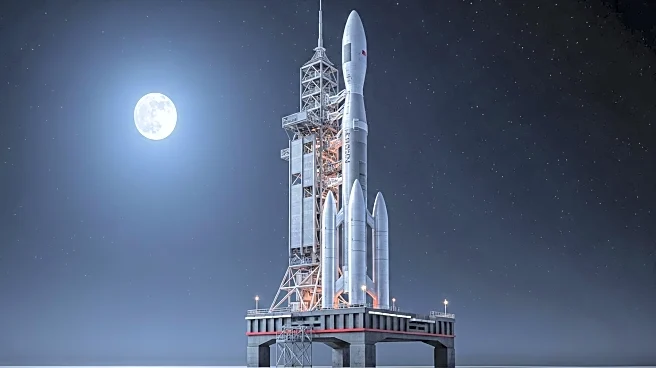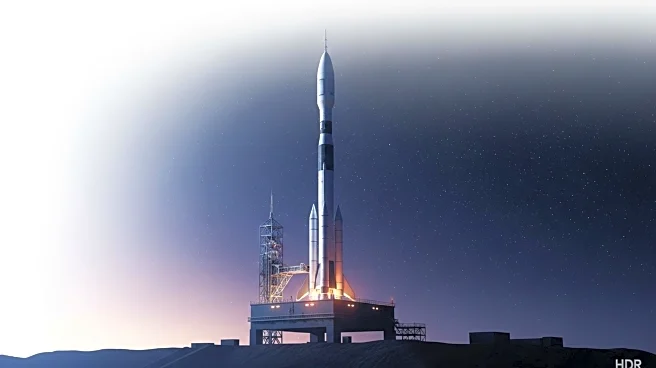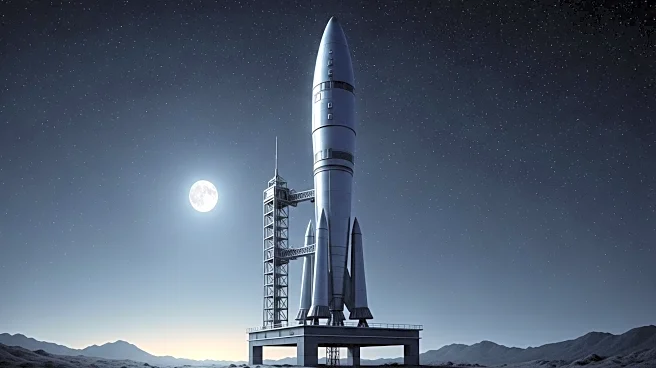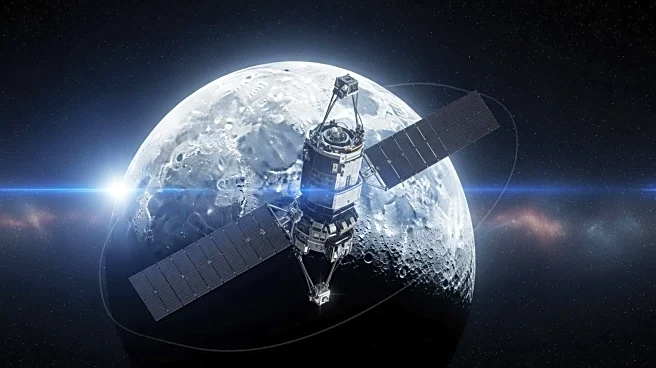What's Happening?
SpaceX is planning an ambitious mission to Mars using its Starship spacecraft, which aims to make a full round trip from low Earth orbit (LEO) to Mars and back. This mission requires at least 1,200 metric tons of propellants for the return journey, which will be produced from indigenous CO2 and H2O on Mars. The mission design involves multiple Starships and heavy lift launches, with at least five Starships needed for the mission, each requiring a dozen heavy lift launches to fuel them in LEO. The mission also involves finding and processing large amounts of Mars water to produce the necessary propellants. SpaceX's approach marks a shift from minimizing mass to using large amounts of mass to reduce complexity and risk.
Why It's Important?
The mission represents a significant shift in space exploration strategy, moving away from minimizing mass to leveraging large payloads to achieve more ambitious goals. This could potentially lower the cost of space travel and open up new possibilities for human exploration of Mars. The success of this mission could pave the way for future large-scale human missions to Mars, challenging existing paradigms in space exploration. However, the mission's success depends on the ability to find and utilize Mars water, which remains uncertain. The outcome of this mission could have far-reaching implications for the future of space travel and the role of private companies like SpaceX in space exploration.
What's Next?
SpaceX will need to conduct numerous heavy lift launches to fuel the Starships in LEO and identify suitable landing sites on Mars with accessible water. The mission's success will depend on the ability to produce the required propellants on Mars and safely return the crew to Earth. The mission's progress will be closely watched by the space industry, governments, and the public, as it could redefine the possibilities of human space exploration.
Beyond the Headlines
The mission raises ethical and environmental questions about the use of Mars resources and the potential impact on the Martian environment. It also highlights the growing role of private companies in space exploration and the potential for collaboration or competition with government space agencies. The mission's success could lead to a shift in public perception of space travel and inspire a new generation of space enthusiasts.











